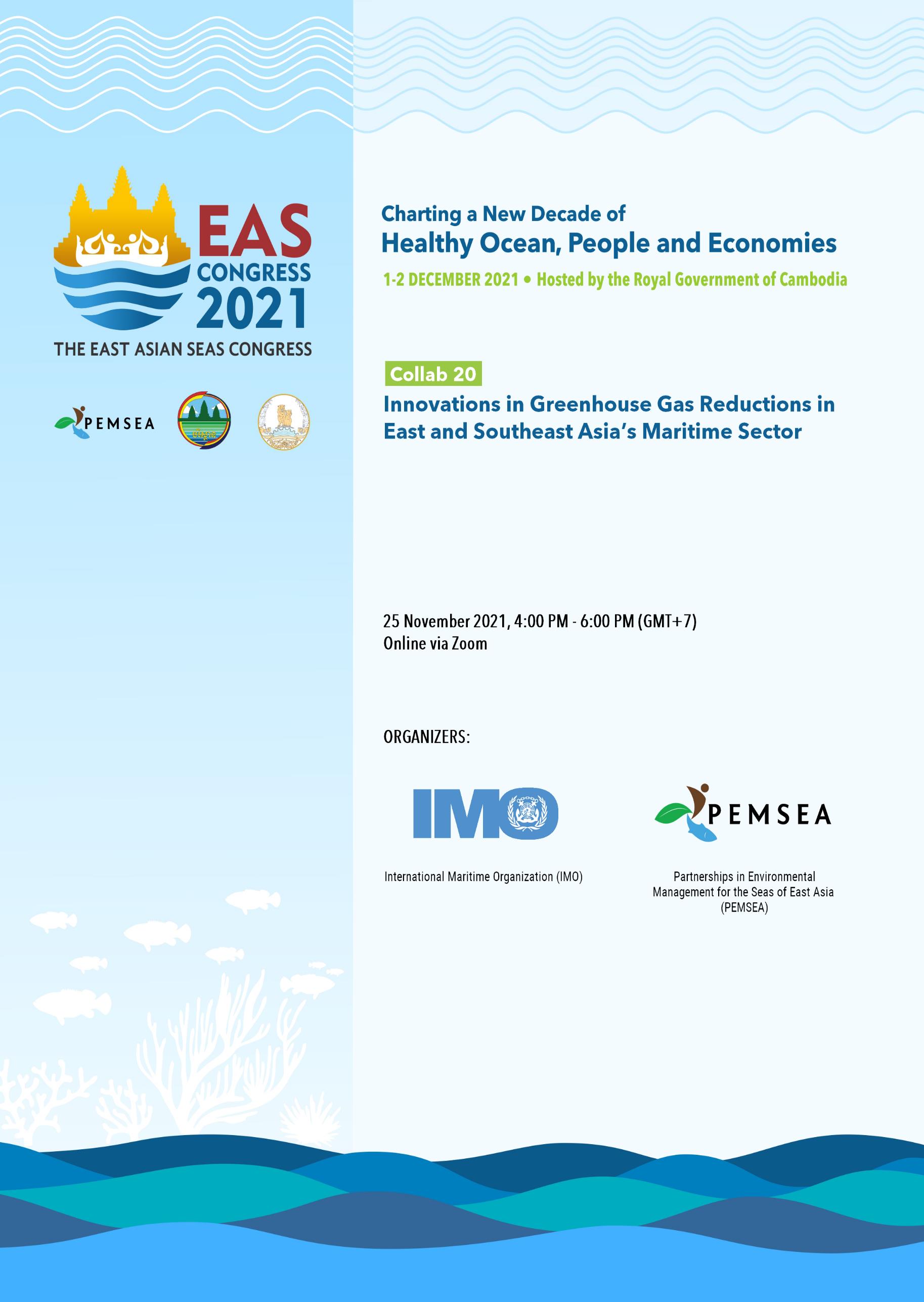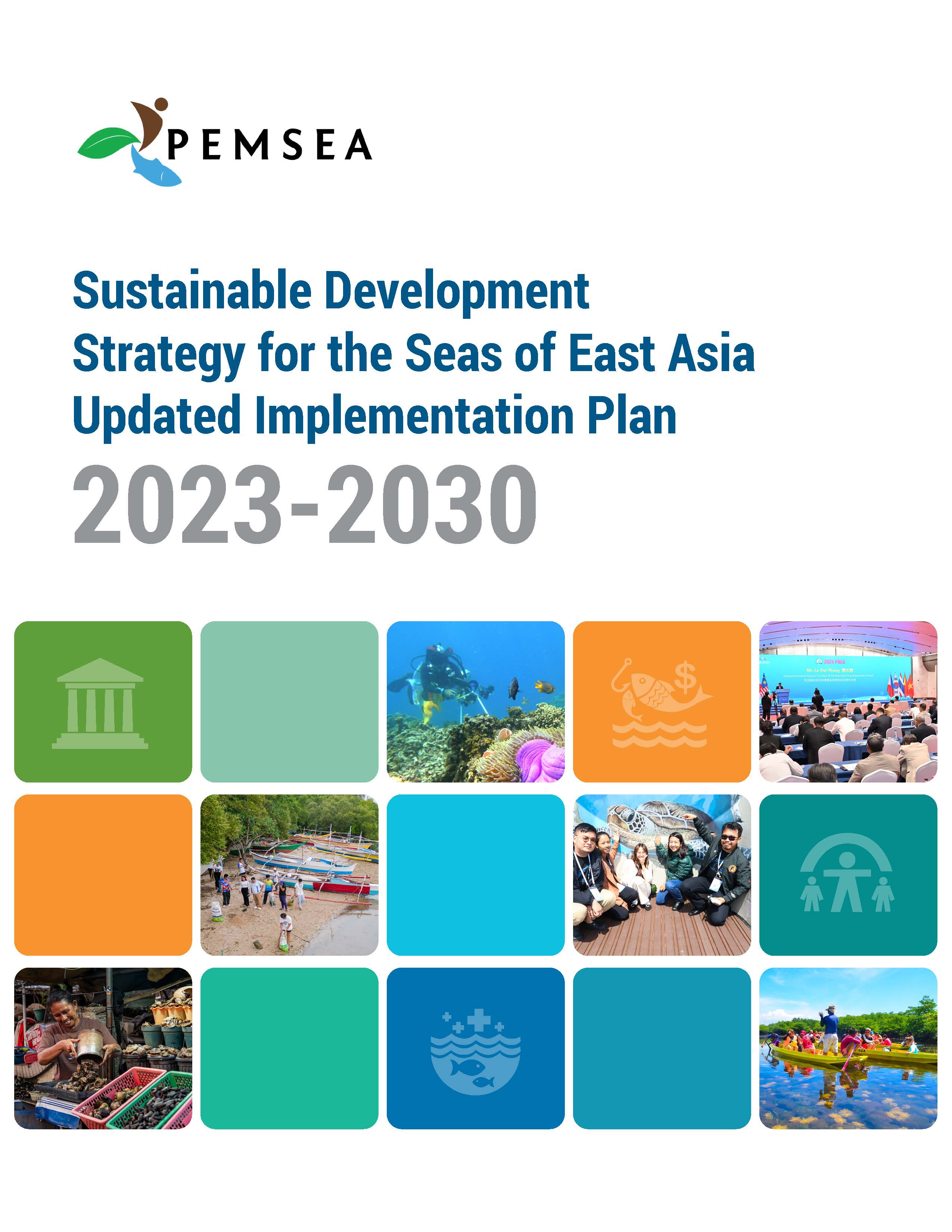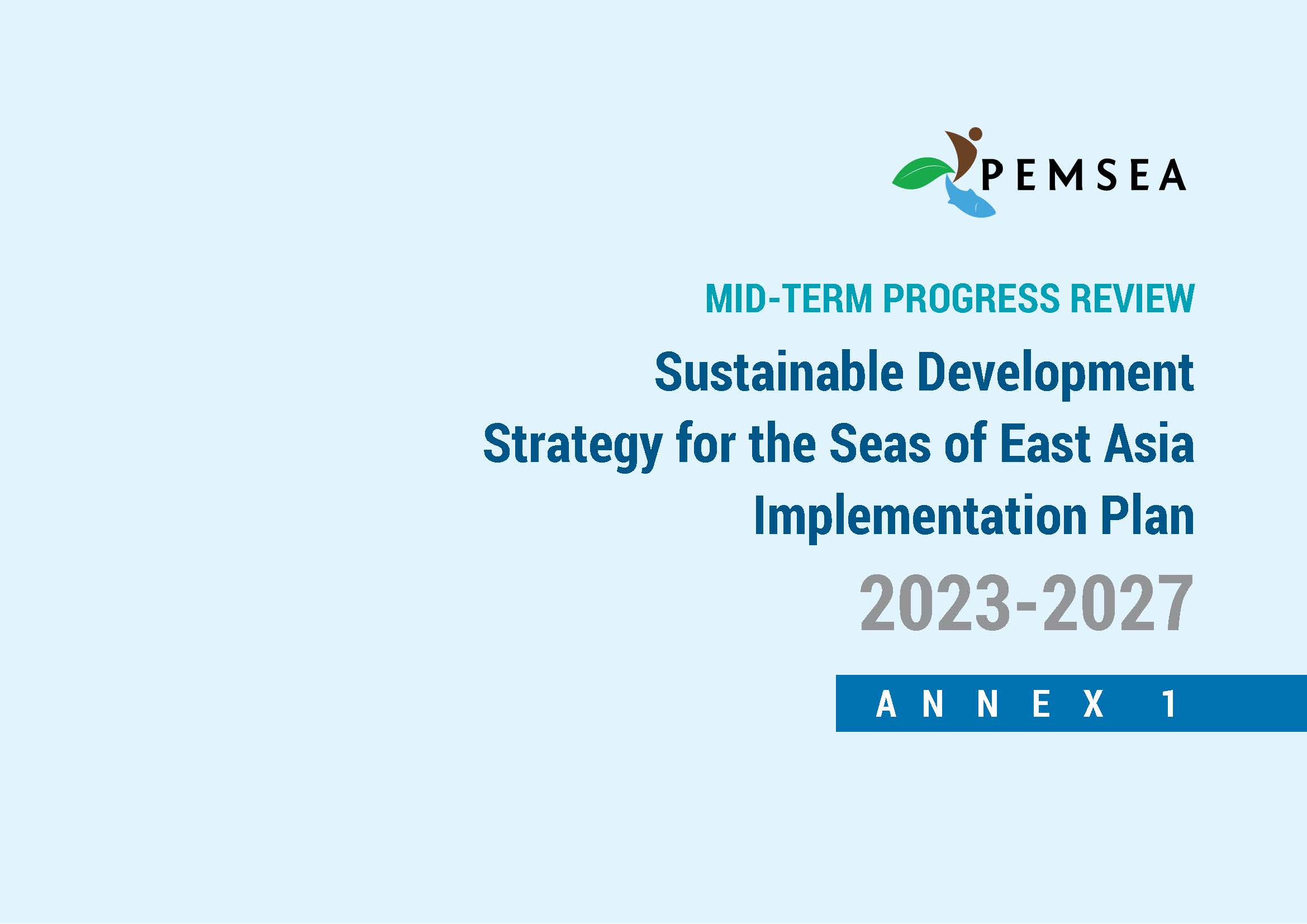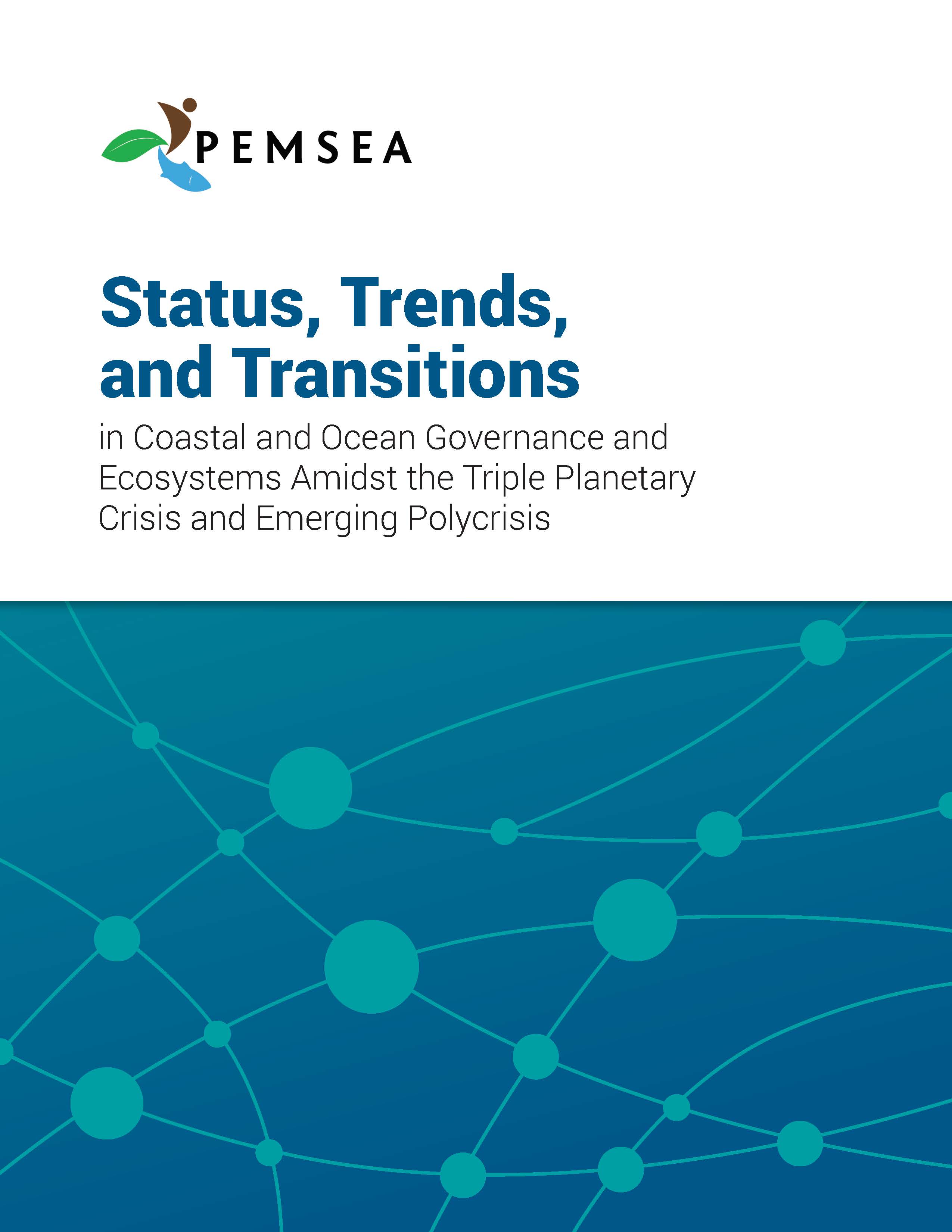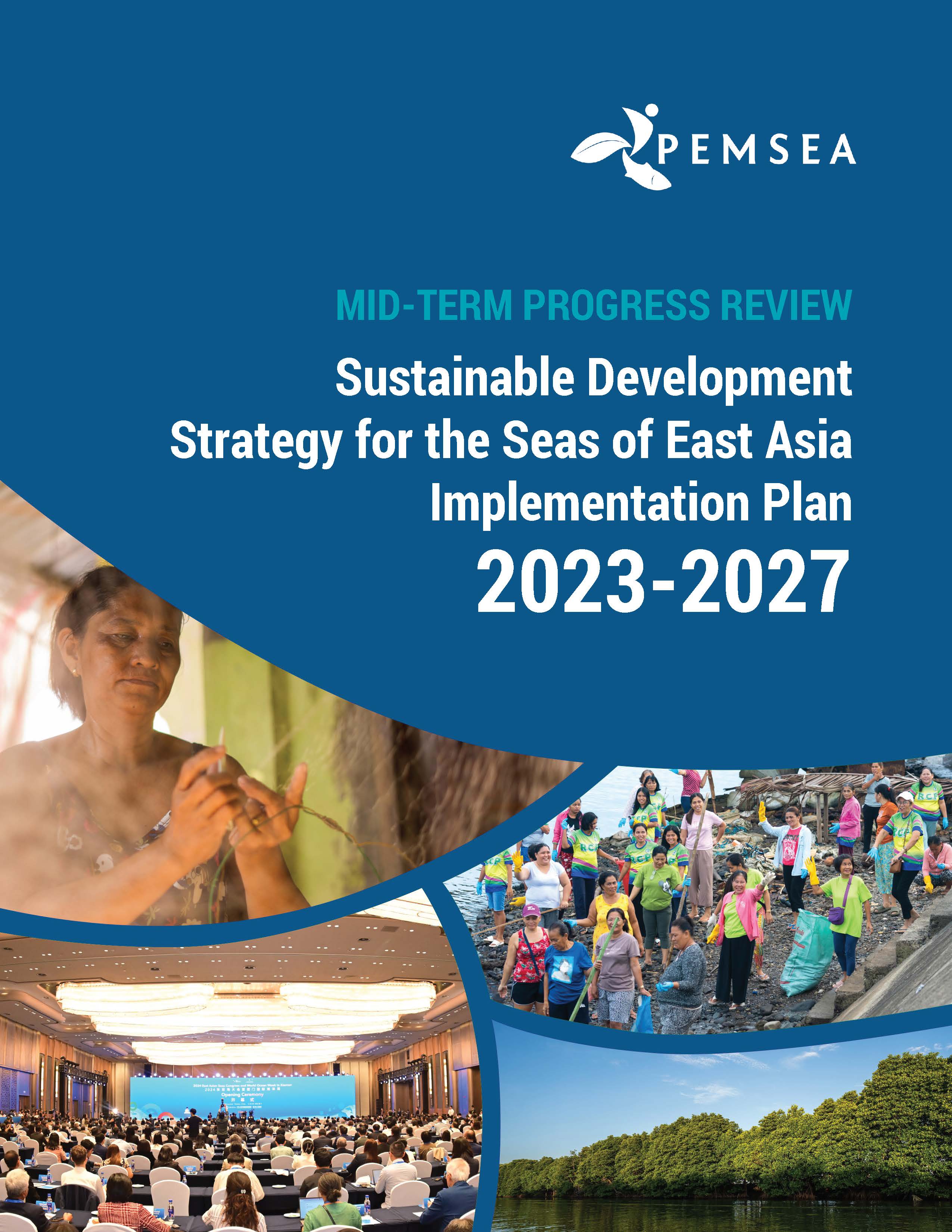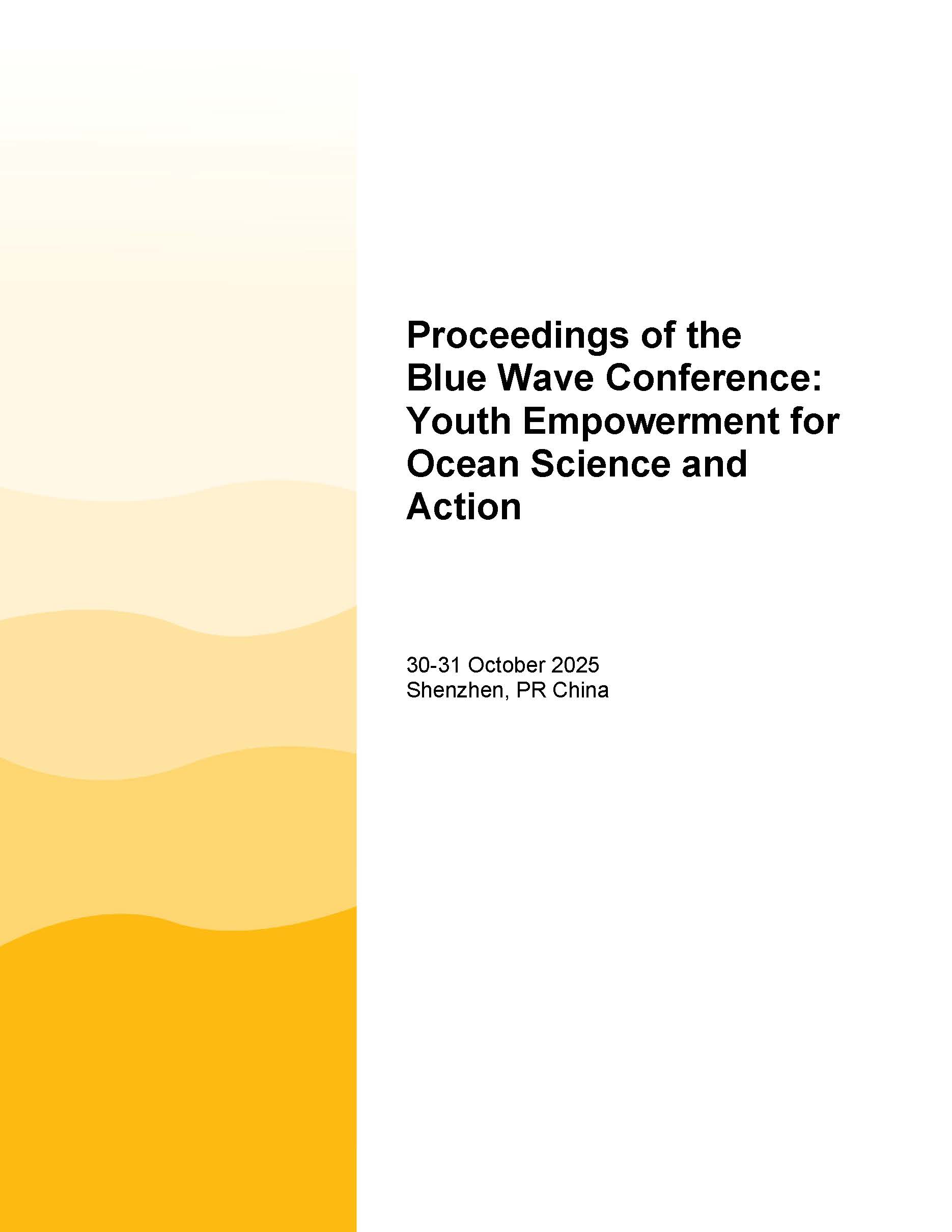
Breadcrumb
Collab 20: Innovations in Greenhouse Gas Reductions in East and Southeast Asia’s Maritime Sector
PUBLICATION DATE:
Wednesday, February 02, 2022
PUBLICATION TYPE:
Meeting Documents
STATUS:
Only Available Online
DESCRIPTION:
Over the last decade, maritime transportation has grown to almost 90 percent global oversea trading logistics and correspondingly produces 3%-5% of the total global GHG emission. Sixty percent of this total trade volume passes through the seas and ports of Asia.
According to the Fourth GHG Study of the International Maritime Organization (IMO), GHG emissions of total shipping have increased from 977 million tonnes in 2012 to 1,076 million tonnes in 2018 (9.6 percent increase) mostly due to a continuous increase of global maritime trade. The Study projects that shipping emissions could increase to 90-130 percent of 2008 emissions by 2050, pointing out that it will be difficult to achieve IMO’s 2050 GHG reduction ambition (i.e., reduce the total annual GHG emissions from shipping by at least 50 percent) through energy-saving technologies and approaches alone (e.g., slow steaming and Just in Time arrivals, among others). Under all projected scenarios, by 2050 a large share of the total amount of CO2 reduction will have to come from the use of low-carbon/zero-carbon alternative fuels.
A shift to low-carbon/zero-carbon fuels and energy sources is not solely a shipping issue, but one that cuts across the maritime transportation, fuel, and energy systems, requiring collaborative efforts to address all the subsystems in an integrated manner encompassing, among others, ships, ports, hinterland transport, cargo handling and logistics, low- carbon fuel sources and distribution, renewable energy supply, IT/communication and information-sharing, and so on.
RELATED PUBLICATIONS
Sustainable Development Strategy for the Seas of East Asia (SDS-SEA) Implementation Plan 2023-2030
The Sustainable Development Strategy for the Seas of East Asia (SDS-SEA) Updated Implementation Plan 2023-2030 was established to extend the previous plan's timeframe to 2030, ensuring the continued relevance, effectiveness, and long-term sustainability of PEMSEA’s initiatives while enhancing organizational effectiveness, financial sustainability, and operational efficiency. The updating process was driven by several supporting efforts, including the mid-term progress review of the SDS-SEA IP 2023-2027, a review of status and trends in coastal and ocean governance, results from PEMSEA’s Organizational Capacity Assessment (OCA), and consultations with PEMSEA Country and Non-Country Partners. To bolster results-based management, the plan introduces a Strategy Map and Balanced Scorecard (BSC) as high-level tools for leadership to provide overall strategic direction across four key perspectives: Stakeholder Engagement, Programs and Processes, Learning and Growth, and Financial Sustainability. These high-level tools are supported by a detailed Strategic Results Framework (SRF), which guides operational implementation and performance tracking, with results from the SRF feeding upward to systematically inform the BSC and Strategy Map. Overall, the updated plan is focused on seven Strategic Objectives that are periodically monitored via a two-tiered system with support from various partners and networks, ensuring the plan remains fit for purpose and serves as a guide for adaptive management.
Annex 1 of the Mid-Term Progress Review of the PEMSEA SDS-SEA Implementation Plan 2023-2027
The Annex 1 of the Mid-Term Progress Review of the PEMSEA SDS-SEA Implementation Plan (IP) 2023-2027 is the detailed progress report on each target outcomes from 2023 to 2025 and the remaining target actions and outcomes leading to 2030.
Status, Trends, and Transitions in Coastal and Ocean Governance and Ecosystems Amidst the Triple Planetary Crisis and Emerging Polycrisis
This comprehensive research report was developed to inform the updating of the Sustainable Development Strategy for the Seas of East Asia (SDS-SEA) Implementation Plan 2023-2030 by synthesizing recent global, regional, and national developments. It examines the interconnected threats of the triple planetary crisis - climate change, biodiversity loss, and pollution - as well as the broader polycrisis of economic and geopolitical instability affecting coastal and ocean governance, including in the East Asian Seas region. The report also assesses the status and trends of traditional and emerging blue economy sectors and outlines the importance of strengthened data and monitoring systems, research and development, policy alignment, and innovative financing as strategic priorities to support a resilient and sustainable ocean future. Ultimately, the report supports the development and refinement of future strategies, particularly the updating of the SDS-SEA Implementation Plan to 2030. Overall, the report highlights PEMSEA’s critical role as a regional integrator in East Asia, bridging local priorities with global commitments to address rapidly evolving challenges and emerging opportunities in coastal and ocean governance and development.
Mid-Term Progress Review of the PEMSEA SDS-SEA Implementation Plan 2023-2027
The Mid-Term Progress Review of the PEMSEA SDS-SEA Implementation Plan (IP) 2023-2027 is an evidence-based assessment covering 2023 to June 2025 that aims to evaluate implementation status, identify challenges, and inform the refinement of the plan toward 2030. The review covers key initiatives of PEMSEA Country and Non-Country Partners, networks, collaborators, and the PEMSEA Resource Facility (PRF), in line with the agreed targets of the SDS-SEA IP.Under Component 1 (Effective Governance), the review highlights the strengthening of PEMSEA’s regional mechanisms through increased voluntary contributions, delivery of various capacity-building initiatives, increasing alignment of PEMSEA Country Partners’ policies and programs with global sustainable and ocean-related commitments, and the increasing project portfolio under PRF management. Progress for Component 2 (Healthy Ocean) is characterized by the expansion of Integrated Coastal Management (ICM) along with other area-based integrated management approaches, the support of PRF-managed projects in biodiversity conservation, fisheries management, land-based and sea-based pollution reduction, waste management, and efforts related to disaster risk reduction and climate change adaptation including the launch of the PEMSEA Blue Carbon Program. Regarding Component 3 (Healthy People), the review emphasizes inclusive stakeholder engagement through the new GESI Action Plan and the success of localized sustainable livelihood programs through PRF-managed projects that have improved community resilience. Finally, for Component 4 (Healthy Economies), the review notes the increasing integration of blue economy principles into national strategies and the adoption of the 2024 Xiamen Declaration, which helps facilitate synergistic actions and sustainable blue financing and public-private partnerships.
Proceedings of the Blue Wave Conference: Youth Empowerment for Ocean Science and Action – Opening Ceremony and PEMSEA Network of Young Leaders (PNYL) Session
The Blue Wave Conference: Youth Empowerment for Ocean Science and Action – Opening Ceremony marked the first Youth Conference held in Shenzhen, China, on 30–31 October 2025. The event was organized by China Ocean Mineral Resources R & D Association (COMRA), Global Ocean Capital Promotion Council of Shenzhen, Shenzhen Institute of Guangdong Ocean University, Advanced Institute for Ocean Research, Southern University of Science and Technology (AIOR, SUSTech)/ Shenzhen Ocean University Preparatory Office, Partnerships in Environmental Management for the Seas of East Asia (PEMSEA), and Early Career Ocean Professionals (ECOP) Programme.
The PEMSEA Network of Young Leaders (PNYL) session featured four speakers and two reactors, namely: Mr. Akhmad Nurhijayat from the Center for Coastal and Marine Resources Studies (CCMRS), IPB University, Dr. Sim Wei Hung Clarence from Nanyang Technological University, Singapore, Ms. Keomanivone PHOUTHAKHANTY from Department of Water Resources, Ministry of Agriculture and Environment, Lao PDR, Mr. Leo Anthony Castro from Mangroves Matter PH, Dr. Shenghui Li from Guangdong Ocean University, Zhanjiang, China, and Dr. Xuan Zhu from Research Center for Pacific Island Countries (RCPIC) of Liaocheng University.
